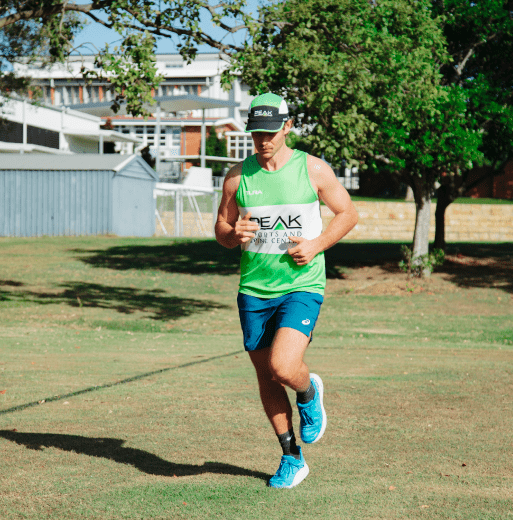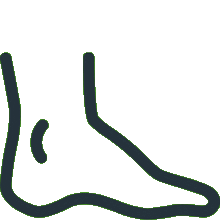
How does diabetes affect the feet?
Diabetes is a chronic condition that can have widespread effects on the body, and one of the most overlooked areas it impacts is the...
Read moreAnkle dorsiflexion plays a crucial role in our daily movements. From walking and climbing stairs to engaging in more complex activities like running or squatting, adequate ankle flexibility is fundamental. Insufficient dorsiflexion can lead to compensatory movements that may strain other joints and muscles, impacting overall movement efficiency.
Ankle injuries, such as sprains or fractures, often impact ankle dorsiflexion. When the ankle undergoes trauma, whether from a sudden twist or impact, the structures supporting dorsiflexion—such as ligaments, tendons, and muscles—can be affected. Swelling, pain, and reduced mobility are common consequences.
Injuries often lead to a protective response from the body, resulting in decreased ankle dorsiflexion to prevent further damage. This reduced range of motion can persist even after the injury has healed. Scar tissue formation and muscle weakness due to disuse can further limit the ability to achieve full dorsiflexion.
Adequate ankle dorsiflexion is essential for a proper squat technique. Insufficient flexibility can limit the depth of your squat, potentially causing compensation from other joints like the knees or lower back. By improving ankle dorsiflexion, you enhance your squat mechanics, allowing for better form and reducing the risk of injury.
Exercise for improving your squat mechanics:
Anchor a resistance band at ankle height and loop it around your ankle. Step back gently to create a light stretch on the ankle joint. Hold for 1-2 minutes, ensuring a comfortable stretch. Remember to breathe and avoid overstraining, especially if you have ankle concerns.
Running relies significantly on ankle dorsiflexion. A lack of flexibility here can alter your running gait, leading to compensatory movements that might contribute to issues such as shin splints or Achilles tendon problems. Improved ankle flexibility helps in achieving a more natural and efficient running stride, enhancing performance and reducing injury risks.
Exercise for improving your running ankle strength:
Stand tall and lift your toes, walking forward on your heels. Keep the movement controlled, engaging your calf muscles. This exercise strengthens your calves and improves ankle flexibility.
Maintaining ankle flexibility and strength is not only essential during recovery but also for long-term joint health. Regularly incorporating ankle flexibility exercises into your routine can prevent stiffness and reduce the likelihood of future injuries. Consistent strength and range of motion maintenance contribute to overall joint longevity.
Here are two exercises to start you on your journey to improving your ankle mobility and strength:
Sit on the floor with your legs extended. Loop a resistance band around the ball of your foot and hold the ends in your hands. Gently pull the band towards you, flexing your ankle upwards. Hold for a few seconds and release slowly.
Understanding how crucial ankle dorsiflexion is for daily movement and recovery emphasises its role in overall joint health. It’s not just about recovery; it’s a long-term commitment to mobility. Podiatrists and physiotherapists work together to assist in recovery, offer strategies for maintaining ankle flexibility and strength, and ensure resilient ankles for life’s challenges. With their guidance and your dedication to ankle exercises, you’ll confidently stride through life. They’re your partners in achieving better ankle mobility, enhancing your quality of life, and ensuring lasting ankle health.

Diabetes is a chronic condition that can have widespread effects on the body, and one of the most overlooked areas it impacts is the...
Read more
Pain is often perceived as a warning sign that something is wrong in the body. While this can be true in cases of an...
Read more
Choosing His Pain Lleyton, one of our dedicated physiotherapists, recently crossed the finish line of the Tokyo Marathon in 5 hours and 20 minutes—a remarkable...
Read more
Finding the perfect running shoe can often feel like a challenge—there’s an overwhelming number of options to choose from, and it’s hard to know...
Read more
Insights into PEAK Coach Callum’s Journey! The road to the marathon is no easy feat, but for many, it’s a bucket list item worth the...
Read more
How Women’s Health Physiotherapy Can Support Your Birth Experience Pregnancy is a time of incredible change and anticipation, and as you approach your birth day,...
Read more
With summer drawing to a close, and taking the stinking hot days with it, for many of us that signals the start of the...
Read more
Acute wry neck is a common musculoskeletal condition characterized by sudden and severe neck pain, often accompanied by abnormal head positioning and muscle spasms....
Read more
And the role Physiotherapy can play in managing it. Joint hypermobility is a very common presentation that our clinicians treat at PEAK and it is...
Read more
Meet Luke, a PEAK athlete with a story we have all heard before – lower back pain that leaves you completely debilitated for days. Luke...
Read moreNot exactly what you're looking for?
View all articles

















Can't find what you're after?
View all ServicesOr email the PEAK team at info@peakssc.com.au
To make a booking outside of business hours, please use our form by clicking here.
To make a booking outside of business hours, please use our form by clicking here.